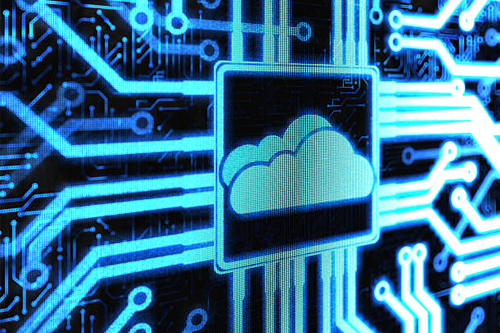It’s no secret that the cloud is growing at an exponential rate. By 2016, two-thirds of the world’s server workloads will exist in the cloud. But according to Cisco’s 2012 Cloud Index, less than half of server workloads currently run in the cloud. Closing the gap between current capabilities and future requirements is a mission-critical priority for businesses across a range of industries. Without adequate planning and preparation, the race to the cloud can easily become a long slog through a minefield of missed opportunities, user failures and IT nightmares.
As more and more workloads make their way to the cloud each year, enterprises have a vested interest in expanding network capabilities and evolving critical data center infrastructure to accommodate an ever-increasing array of cloud-based applications and data storage requirements. Key Trends in Cloud Technology
Several trends are driving the migration of applications and data to the cloud.
- Agility: Cloud deployment enables businesses to improve performance and functionality quickly, launching new applications without a corresponding need for additional infrastructure. Agility is especially important in new and young companies, many of which lack the time and resources to deploy a range of diverse applications internally.
- Consumerization of IT: The Bring Your Own Device (BYOD) trend is enabling companies to expand the use of technology through the use of employee-owned devices. The cloud is playing an important role in helping organizations keep up with the pace of BYOD and deliver anytime, anywhere access to workers.
- Cost Drivers: Financial metrics are also a motivating factor in the race to the cloud. In general, Software-as-a-Service (SaaS) is cheaper, faster and easier than traditional deployment models – reducing the cost of infrastructure, physical space and IT labor.
Preparing for the Cloud
Successful preparation for future cloud workloads requires planning. By strategically adapting your network capacity, data center and other critical IT functions, you can substantially improve your organization’s ability to operate in the cloud.
Today’s networks must be capable of handling constant interactions characterized by rich media and heavy content, particularly as users migrate away from email toward interactions via social media and other channels. Consequently, networks and data centers must expand to support instant access to many different types of content beyond email.
The first step of network expansion is a comprehensive assessment of your organization’s app portfolio. In most cases, executive decision-makers are unaware of the scope of applications that are running in the organization. Once all of the applications that are currently running in your organization have been identified, they need to be ranked and categorized according to future requirements. While some applications may need to remain in-house, others can be transferred to a public cloud environment. From there, the organization can begin to evaluate how to expand the network to manage future workloads.
As virtualization becomes more prevalent in data centers and companies adopt a cloud-based strategy, network architects need to rethink and redesign their current infrastructure to adapt to the new traffic patterns. What once used to be primarily “North-South” network traffic flow is now becoming “East-West.” Environments are becoming highly dynamic; workloads are moving to different physical locations on the network as virtual servers are migrated and clients move about the building. The architectures and networking techniques of yesterday are not necessarily well suited to the architectures and applications of today and tomorrow.
A thorough understanding of networking, the infrastructure that is its foundation, and its relationship to applications is necessary when architecting a data center network that is capable of supporting and adapting to future challenges that arise as a result of virtualization and cloud computing. The solution must address all aspects of application delivery – security, availability, performance, and visibility – while exhibiting the qualities and characteristics that define cloud architectures including affordability and elastic scalability. The data must be protected against attacks, intrusions, breaches, and leaks and categorized based on its importance and network resource needs with Quality-of-Service (QoS) capabilities.
Storage and Backup is another key to preparing for cloud migration. Security is a top-of-mind issue in the cloud. Although cloud deployments offer real benefits, your organization needs to know that sensitive data will remain secure. The process for preparing for cloud-based data storage and backup mirrors the process for evaluating network expansion requirements. Starting with an assessment of current data sources and storage routines, the organization needs to evaluate what types of data can eventually either integrate with or be completely transferred to the cloud. Equipped with this information, the organization can begin to identify the technology gaps that need to be addressed to meet future cloud storage and backup requirements.
Purpose-built appliances provide fast backup and restore and deliver local-like performance while using the cloud for secure off-site storage. This helps avoid the need to provision and manage a secondary site for Disaster Recovery (DR) or long-term storage. This can dramatically reduce capital spending, streamline IT infrastructure, and enable payback periods that are measured in months, not years. Appliances can be combined with existing data protection applications and private or public clouds, creating a low cost, highly scalable storage tier for old or infrequently accessed data. Appliances also allow organizations of all sizes to modernize their data protection architecture, eliminate tape, improve scalability, and improve Disaster Recovery readiness. Cloud storage allows organizations to leverage a pay-for-use pricing model and anywhere availability.
Increased virtualization will alleviate some of the cloud migration challenges upfront. Cloud technology enables organizations to move servers to the cloud and back in an integrated and strategic manner. In fact, the use of virtualization can also play an important role in preparing the organization’s culture and stakeholders for future cloud deployments. By increasing the use of virtualization now, you can encourage greater acceptance of the cloud across your enterprise. In essence, virtualization can serve as a bridge to the cloud.
It is the key technology that enables the cloud, and without it there is no cloud. The ability to separate the OS and application from the hardware allows it to be the foundation required for on-demand cloud services. The encapsulation offered in virtualization and the mobility that enables a live virtual machine to be moved with no downtime for the application is what the cloud is built on. If you look at virtualization / cloud computing as a whole, it really is not about a product, but a journey. Companies initially enter the world of virtualization because they just can’t keep up with the increased scale, complexity, and management requirements while maintaining their current traditional infrastructure.
This leads them to the first step in the virtualization journey, which is to consolidate their resources/infrastructure to get better utilization of their servers and to reduce their energy cost. Higher levels of abstraction allow companies to take advantage of the intelligence built into the virtualization software. Intelligent software allows High Availability (HA) and Replication, load balancing, pooled resources, self-automation/orchestration, service definitions or service profiles, templates, policies, self-service portal, service catalog(s), security and identity management, system monitoring/management, capacity planning, billing and chargeback, and licensing.
It’s important to understand that the ability to handle future cloud-based workloads will present different challenges and concerns for the stakeholders in your organization; users are motivated by ease-of-use and increased access to applications and data, CIOs are focused on control, ownership and security and CFOs are primarily concerned about the cost savings, rate of return and OpEx versus CapEx, etc. By thoughtfully and strategically preparing for future cloud opportunities, your organization can address these concerns and fully leverage the benefits of cloud technology across the enterprise.



















